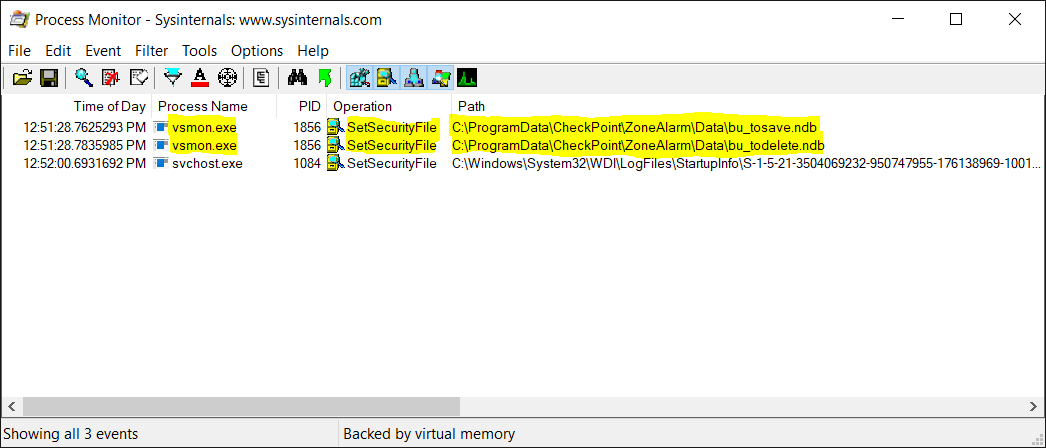Abstract
A vulnerability was found in the TrueVector Internet Monitor service, which is installed as part of the Check Point ZoneAlarm firewall. This vulnerability allows a local attacker to cause the affected service to change the file permissions of arbitrary local files. After the file permissions have been changed, the attacker can then overwrite its content, and ultimately gain elevated privileges on the vulnerable machine.
Tested version
This vulnerability was successfully verified on ZoneAlarm Free Firewall v15.8.023.18219/TrueVector Internet Monitor v15.8.7.18219.
Fix
Check Point released new versions of ZoneAlarm Firewall that fix this vulnerability. The latest version of ZoneAlarm Free Firewall (v15.8.043.18324) can be obtained from https://www.zonealarm.com/software/free-firewall/download.
The 2020-03 Cumulative Update for Windows 10 adds hardlink mitigations. After installing this update, Windows will require write access on the target file otherwise the hardlink won't be created. Requiring write access on the target file also mitigates this issue.
Introduction
A vulnerability was found in the TrueVector Internet Monitor service, which is installed as part of the Check Point ZoneAlarm firewall. This vulnerability allows a local attacker to cause the affected service to change the file permissions of arbitrary local files. After the file permissions have been changed, the attacker can then overwrite its content, and ultimately gain elevated privileges on the vulnerable machine.
Vulnerability details
The TrueVector Internet Monitor service is running as LocalSystem, it periodically creates a number of backup files within the *%ProgramData%\CheckPoint\ZoneAlarm\Data* folder. When these files are created, their file permissions are explicitly set to Full Control for Authenticated Users. A local attacker can create a hardlink with the same name as the backup files, causing the permissions of another file to be changed.
 Figure 1: insecure file permissions set on backup files
Figure 1: insecure file permissions set on backup files
After the file permissions have been changed, the attacker can then overwrite its content, and ultimately gain elevated privileges on the vulnerable machine. Hardlinks can be created using James Forshaw's CreateHardlink tool.
CreateHardlink.exe "%ProgramData%\CheckPoint\ZoneAlarm\Data\bu_tosave.ndb" "%SystemRoot%\win.ini"
CreateHardlink.exe "%ProgramData%\CheckPoint\ZoneAlarm\Data\bu_todelete.ndb" "%SystemRoot%\win.ini"